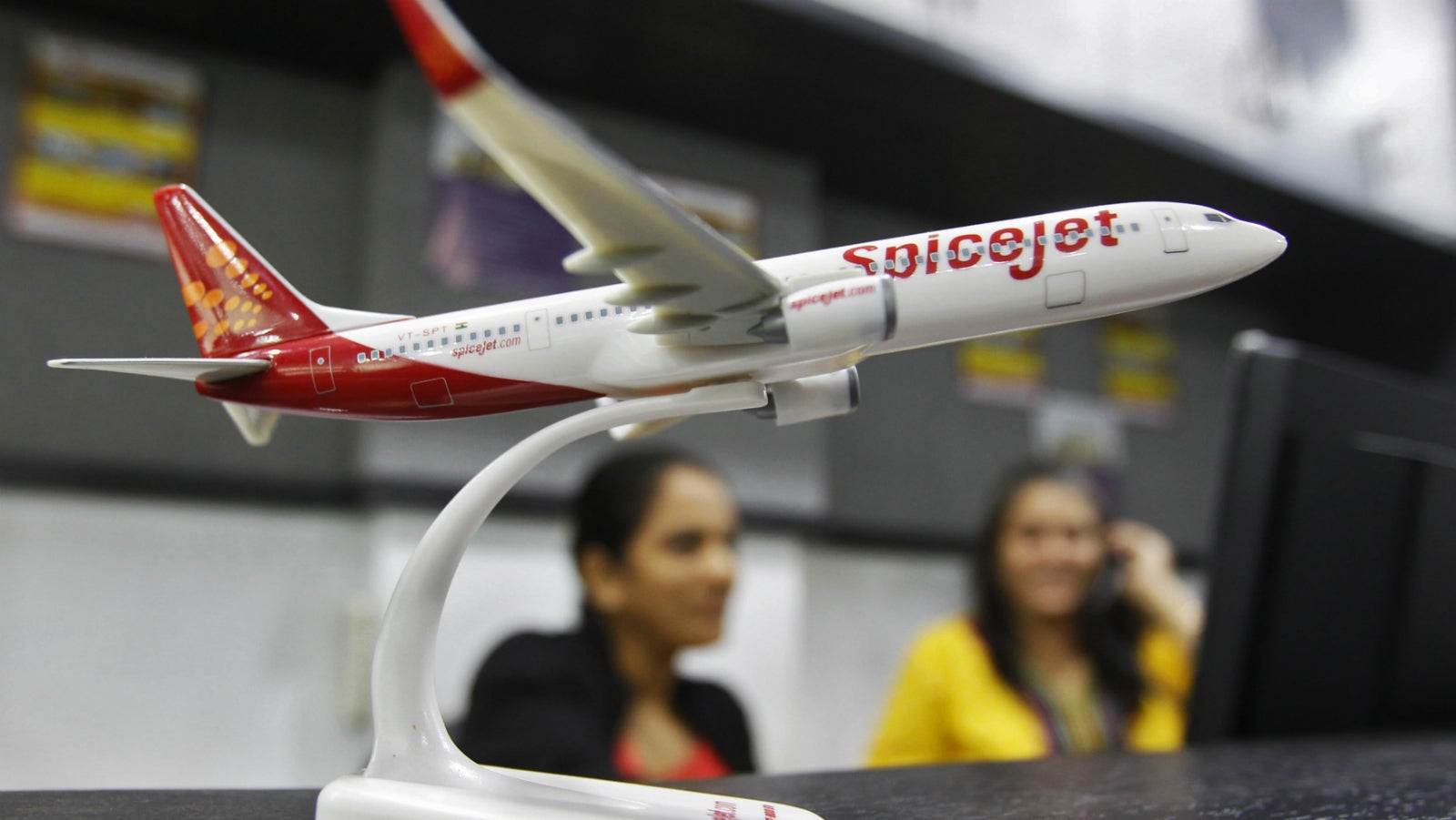India’s bleeding airlines may survive by flying goods, not people
Ferrying passengers alone isn’t helping India’s airlines. So they’re now looking at goods.


Ferrying passengers alone isn’t helping India’s airlines. So they’re now looking at goods.
On Sept. 10, SpiceJet launched a dedicated air cargo service, SpiceXpress. It will begin operations tomorrow (Sept. 18), initially covering Delhi, Bengaluru, Guwahati, Hong Kong, Kabul, and Amritsar.
It has been reported that India’s largest airline by market share, IndiGo, also plans to ferry perishable goods like crabs, fish, and betel nuts in its aircraft. An email to IndiGo remained unanswered.
This diversification comes at a time when high jet fuel prices and a weak rupee are eating into companies’ margins.
“Most airlines have empty space which they could monetise by ferrying cargo. And cargo is not price-sensitive at all, like passenger fares,” said Ashish Nainan, research analyst with CARE Ratings. “What aviation companies would be looking at is to get about 25% of their revenue from their cargo businesses.”
Caught in a trap
In the April-June quarter, two of India’s leading airlines—SpiceJet and Jet Airways—posted massive losses on account of rising costs. IndiGo saw its profits nosedive by 97%.
They haven’t been able to cash in on the fact that consumer demand has been rising faster than supply since they are unable to pass on the rising costs, fearing loss of marketshare.
“Indian carriers’ inability to pass on the costs in a highly price-sensitive market will be a key negative for yields and profitability for the foreseeable future,” Rahul Kapoor, a senior transportation analyst at Bloomberg Intelligence, told Quartz. ”Getting into cargo will help reduce earnings volatility.”
Because cargo works in a different way.
The cash cow
Yields from ferrying cargo are far better than those from passenger services.
“When an airline books a passenger, they account for 105 kgs per passenger. They assume 80 kgs for the passenger weight, 15 kgs for luggage, and an additional 10 kgs for hand baggage. So if they transport 105 kgs of cargo, their yields would be Rs70,000-Rs80,000 contrary to a Rs6,000-Rs7,000 passenger air fare,” said Mark Martin, CEO of aviation consultancy firm Martin Consultancy.
Their move is possibly inspired by Indian Railways, experts said. The railways charge about 31% extra to transport coal to power plants over the other items they carry. This helps make up for the losses incurred on cheap passenger services.
Coal accounts for some 44% of Indian Railways’ freight revenue. And e-commerce can do for airlines what coal does for the railways.
“Indian e-commerce penetration is rising at break-neck speed and airlines are adapting their cargo strategies to cater to demand. Indian consumers are ordering more online goods at home and from abroad, Indian airlines can capture a larger share with their new focus on cargo,” Kapoor said.
But diversification won’t be easy.
Easier said than done
While sharing its plans for cargo, SpiceJet said it will look to leverage its existing staff for the new offering.
“The freighter aircraft will be acquired on pure operating leases and (we) haven’t incurred any major capex (capital expenditure), while the ground operations will be either self-handled by the existing SpiceJet ground infrastructure or shall be outsourced till we develop a certain scale of operations,” Ajay Singh, chairman and managing director of SpiceJet, said in a press release.
This will be true for most players facing a cash-crunch and lacking the muscle for big-ticket investments.
But it may still pose a challenge as cargo requires a wholly different infrastructure.
“When you talk of cargo, you have to have a separate handling authority and the regulations are not as simple there. You need a specific expertise to operate that kind of a business. It makes better sense to monetise available space in aircraft,” said Nainan.
For instance, Blue Dart, which almost has a monopoly in the air cargo service in India with a market share of 49%, ferries six Boeing 757s and has a robust logistical backbone, including 11,122 vehicles and 610 retail outlets.
And when you take on the market leader in a business, there has to be adequate infrastructure support.